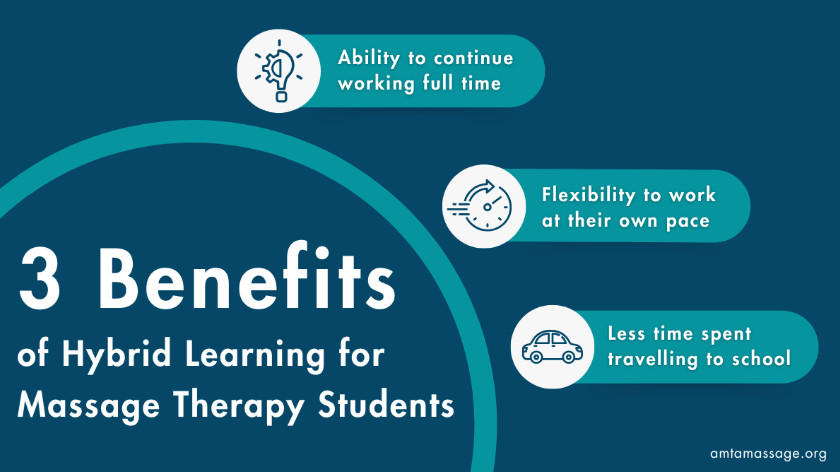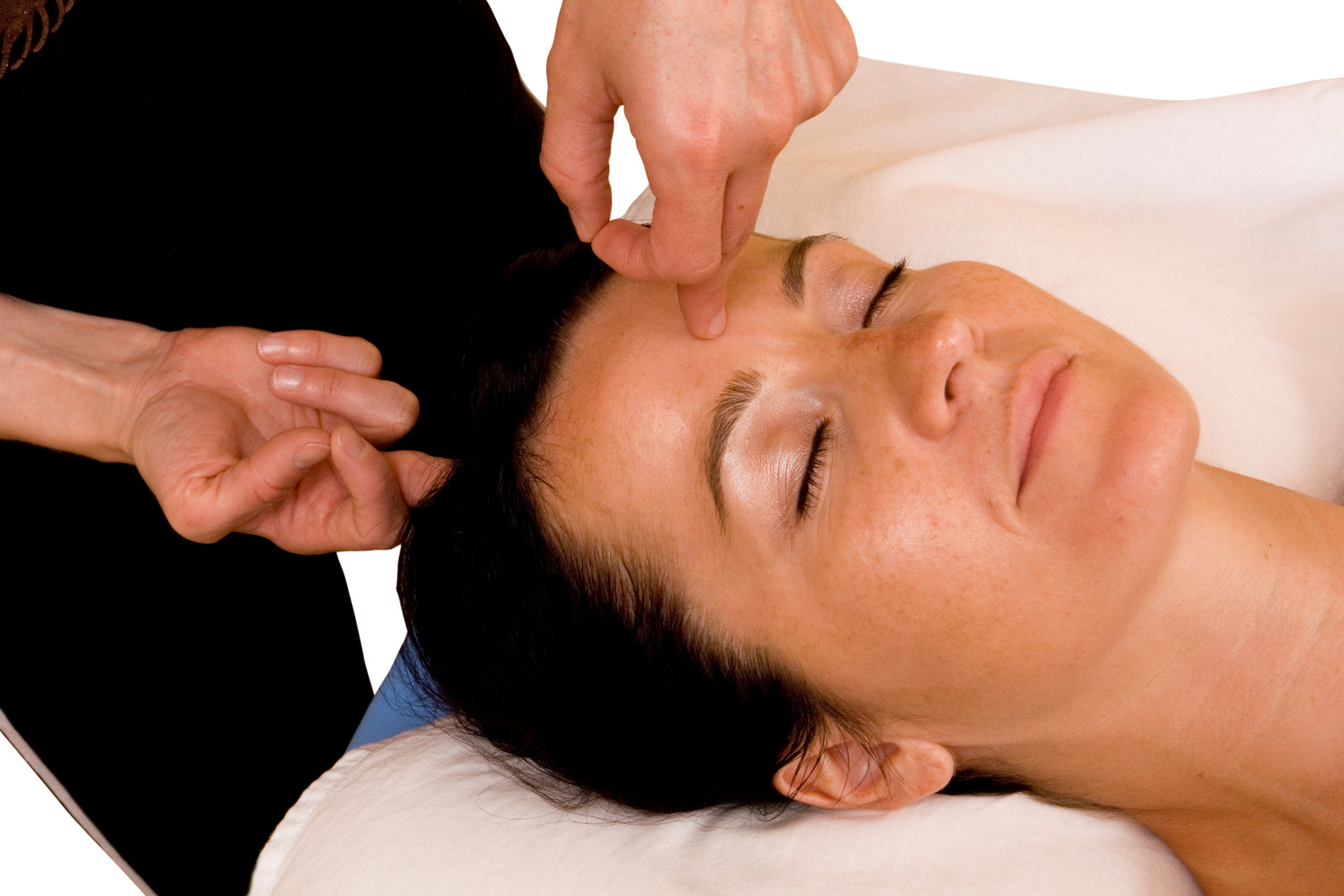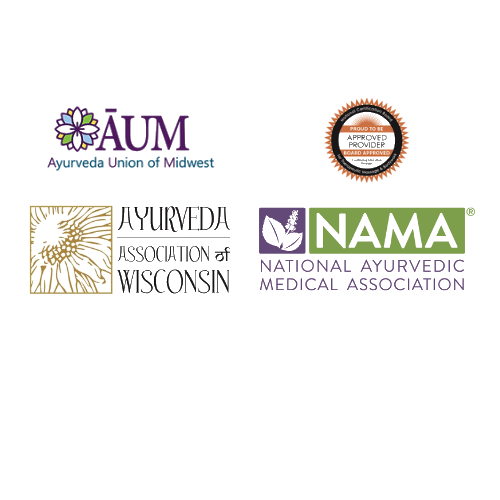The Current State of Hybrid Education in
Massage Therapy
Online learning appears here to stay, but does it work for entry-level education?
Our research indicates that numerous massage therapy schools have successfully integrated hybrid learning models into their curriculum, adapting to evolving student needs while maintaining high educational standards.
"The current state of massage therapy education is experiencing a notable shift toward more adaptable and accelerated learning formats," explains Kathleen Mazy, who owns Texas Massage Academy. "This transformation is primarily driven by students seeking flexible massage therapy certification options that accommodate their busy schedules."
Consider a typical 600-hour massage therapy program, traditionally completed in six to twelve months. Many schools now offer theoretical components through online platforms while maintaining in-person sessions for hands-on training. This hybrid approach has made pursuing a career in massage therapy more accessible, opening new pathways for aspiring massage therapists to enter the field and explore various massage therapy jobs.
What Does the Data Say?
A comprehensive 2023 study investigated how online versus offline teaching methods impact medical students' cognitive abilities. The research collected survey data from entry-level students who participated in online teaching during 2018 and those who received offline instruction in 2019 at Xiangya School of Medicine, Central South University.
The researchers analyzed several metrics, including overall physiology final exam scores, performance in different question types, and student engagement with National Quality Open Courses across various score segments under both teaching models.
The findings revealed no statistically significant differences between online and offline teaching models regarding total scores, short-answer questions (SAQ), and case study questions (CSQ). Interestingly, students performed better on multiple choice questions (MCQ) in the online teaching format.
The study also found that students with lower academic performance
achieved higher total scores in both MCQ and CSQ categories when learning online. The researchers concluded that online instruction was comparable to offline teaching in cognitive domains and proved more effective for developing lower-order cognitive skills. However, they noted that traditional offline instruction might better serve high-achieving students in developing advanced cognitive abilities.
Another 2023 study examined the effectiveness of blended (hybrid) learning compared to purely online or offline approaches in an evidence-based medicine course. This research evaluated examination scores from 2,100 undergraduate clinical medicine students across three groups: blended learning, online-only, and traditional offline instruction.
The results demonstrated significantly higher exam scores and pass rates among students in the blended learning group compared to both online-only and offline groups. Furthermore, when surveyed about their preferences, 71.6% of students favored the blended teaching approach. The researchers noted, "Implementing a blended education strategy in evidence-based medicine courses enhances students' learning motivation, independence, and overall satisfaction."
Hybrid Learning for Entry-Level Massage Therapy Education
One of the most challenging aspects of hybrid learning is its integration into entry-level massage therapy education. Since this foundational training forms the cornerstone upon which massage therapists build their entire careers, ensuring the effectiveness of a hybrid model becomes paramount.
"A well-structured hybrid model can effectively serve entry-level massage therapy education when thoughtfully implemented," explains Davonna Willis, who founded 4 Nineteen Education & Training. "While theoretical components like anatomy studies or business management courses can be successfully delivered online, the hands-on aspects of massage therapy require substantial in-person training to develop essential tactile skills and professional confidence."
Mazy suggests that in certain scenarios, a hybrid model might actually surpass traditional learning approaches. "Our massage therapy school program gives students the unique advantage of revisiting concepts they might have missed initially. Unlike traditional classroom settings, our online platform offers the ability to review material multiple times," she explains. "During on-campus sessions, we facilitate in-depth discussions about previously covered online material, providing students additional opportunities to deepen their understanding."A well-structured hybrid model can effectively serve entry-level massage therapy education when thoughtfully implemented.
— Davonna Willis
What are the Benefits of a Hybrid Learning Model for Massage Therapy?
For many students pursuing massage therapy jobs, balancing full-time employment with their education is a common challenge. The hybrid learning model proves invaluable in such situations. "Students maintaining full-time jobs while attending massage therapy school particularly benefit from this model, especially when studying science-based courses like anatomy," Willis notes.
Mazy emphasizes flexibility as another key advantage of hybrid learning in massage therapy education. "Our students appreciate the freedom to complete online coursework at their preferred pace," she explains. "Given our rural location, the hybrid model reduces campus commute time by half, making our massage therapy certification program more accessible."
The benefits extend beyond student convenience to impact massage therapy schools positively. "Hybrid education models can potentially boost enrollment numbers, which naturally strengthens the school's financial position," Willis observes.
As with any broad educational approach in massage therapy, the benefits of hybrid learning aren't universal. Different students pursuing massage therapy certification excel in varying learning environments. "Research, including my own studies, indicates that asynchronous learning particularly benefits students with consistently high academic performance," explains Susan Salvo, a respected author, educator, and massage therapy practitioner. "However, for average-performing students, live or synchronous learning environments typically yield better results."
Salvo further emphasizes that students who speak English as a second language or those with neurodivergent learning styles tend to achieve better outcomes in live, synchronous learning settings within massage therapy schools.
The Challenges of Hybrid Education
Some students find maintaining motivation more challenging in online learning environments. The self-paced nature of our programs can sometimes lead to procrastination or feelings of isolation.
To combat these challenges, Seva Ayurveda Academy has established a student community platform where learners can connect with peers pursuing similar massage therapy certification. Our hybrid model also includes regular live Q & A’s and discussions, ensuring students remain aware of available school resources and support.
Despite these obstacles, online components in massage therapy education appear to be a permanent fixture. Technology will play an increasingly vital role and for massage therapy schools to remain competitive and sustainable, they'll need to expand beyond traditional classroom lectures and incorporate additional educational tools, which we at Seva Ayurveda Academy are prepared to do.

















0 Comments